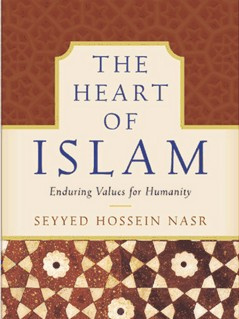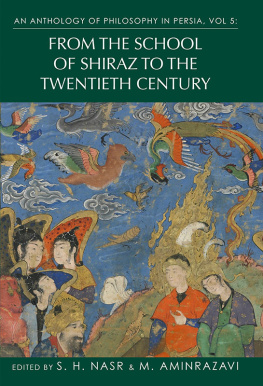Acknowledgments
This book owes its existence to the generosity of many people who provided me with advice, criticism, and encouragement.
Thanks are due to Novin Doostdar and Juliet Mabey for publishing this book. At various points during the gestation of this work, Jonathan Bentley-Smith guided me with care and commitment, while Sam Carters wise editorial recommendations raised the quality of my prose. Oneworld Publications proved to be the best publisher for me, and I am pleased to acknowledge the contributions of Anne Bihan, Hayley Warnham, Paul Nash, and other members of the team who helped shape this volume into what it is.
In all my thinking about history, I have learned immensely from Richard W. Bulliet and Ramzi Rouighi. I thank them both for decades of enriching camaraderie. With a combination of his unique insight and equally exceptional goodwill, Ramzi counseled me on the complexities of navigating diverse primary and secondary sources in multiple languages while keeping the historical narrative simple and straightforward. During our Thursday conversations over lunch, Richard urged me not to settle for low-hanging fruit, and instead to dare to include biographies of lesser-known but still remarkable Muslim women from across the globe. They both read drafts of the manuscript and suggested significant improvements. Fayre Makeig also took her wonder-working pen to enhance the text of this book. I wish to thank Michael Berk and Rafia Ahmad for each reading an earlier draft of one of the chapters.
I am grateful to Brinkley Messick and Astrid Benedek for granting me affiliation with the Middle East Institute at Columbia University and facilitating my access to library resources, which were indispensable for my research. I pay tribute to the priceless devotion of librarians everywhere, including those at Columbia University, as well as local librarians in Larchmont and New York City.
I consider it a blessing to savor the abundant benevolence of my community of friends in Westchester County, NY, and Fairfield County, CT. Specifically, I wish to express my sincere appreciation to Ms. Shireen Mahallati, Dr. Hossein Sadeghi, Dr. Golnar Raisi-Sadeghi, and others for welcoming me into their homes. Among this group, Mrs. Maria Dolores Paoli unstintingly shared dozens of books on women in Islam from her personal library to help me with the writing of this work.
Here, I cherish the memory of my late aunt, Behjat Ashrafi, who passed away shortly after I had started writing this book. As noted on the dedication page, I owe her an unrepayable debt for her unconditional love and grace. Finally, I thank my family. Mitra, Mojdeh, Mohammad, and Reza give me the courage, consolation, and hope that I need to live.
Afterword
We have seen that in the history of Islam women have accomplished a lot more than domestic chores behind the veils of seclusion. One example after another has illustrated that women had historical agency, and has implied that such an agency deserves to be acknowledged in the past and encouraged for the future. Of course, the twenty-one women whose biographies shape this book were all extraordinary women. History often fails to document the lives of ordinary people especially women. By comparison, we have far more abundant information about what presumably extraordinary men did. Even when a woman got to rule as queen and enjoy the highest status, her position hardly empowered her female subjects. However, ignoring or downplaying such cases in the past makes it harder to break new ground for female agency in the here and now.
No doubt, the record of womens participation in the history of Islam has been obscured by an overwhelming interest in the actions and achievements of caliphs, kings, and courtiers, coupled with a primary preference for the teachings of the ulama , Sufi masters, and other men of political and religious authority.
Organizing a narrative history of Islam in terms of womens lives poses challenges on multiple levels, both for methodology and content. Historically, the demands of politics, morality, and religion reinforced one another to give center stage to men and to sideline women. Especially in the past, Islamic societies did not encourage women to engage in the same activities as men in the same social class. The participation of women in public events was limited, and generally women scarcely enjoyed an equal status with men. Circumstances and outcomes seldom fit womens ideals or gave voice to them. However, at least before the nineteenth century, such discrepancy between women and men passed as normal almost everywhere in the world, not solely in Islamic societies.
The extant sources were almost entirely written by men, in whose works women were more likely to be represented than allowed to tell their own stories. Of course, male historians, chroniclers, and jurists have felt intrigued by women, especially famous women, and have produced extensive but biased information and numerous extant sources with a wealth of material about womens roles and legal status in the history of Islam.
Collections of biographical notices on women have a long pedigree in Islamic history, going back at least to the ninth-century work by Muhammad Ibn Sa d (ca. 784845) on the women of Madina. Ruth Rodeds Women in Islamic Biographical Collections (1994) surveys this literary tradition.
Despite all this, the situation of women in most contemporary Muslim-majority countries today, from Afghanistan to Saudi Arabia and even in communities of Muslim migrants worldwide, remains far from ideal. Social restrictions, such as having females chaperoned by male relatives outside the house, as required in many Arab countries today, and policing womens dress in Iran, are all too familiar examples. Disparities in educational advancement, economic opportunity, and public engagement are no less alarming. It is often observed that Islamic or sharia law limits womens accepted roles. Legions of male writers of womens biographies, both from within Islamic societies and later the foreign Orientalists gazing from the outside, have shared unexamined, misogynistic, and self-contradictory assumptions about the nature of women. Their tainted premises are intellectually untenable and sometimes psychologically disturbing. For example, dismissing womens agency, they have depicted women as emotionally and physically fragile and intellectually feeble beings incapable of facing up to fierce reality.
Logical consistency is never a major concern for bigots. So the advocates of theories that routinely spoke of women as embodiments of passivity, coldness, and immobility, also espoused a diametrically opposite viewpoint when it suited them. Confronted by historical cases of a woman bursting upon the public scene and taking matters into her hands, they switched to an alternative theory that associated womanhood with wild, tempestuous, and impure and improper energies. Vacillating between such alternative but equally misinformed notions partly depended on the observers own place in the power hierarchy. To sustain male dominance, such insiders and outsiders both identified womens empowerment as a sign and source of decline, bolstering the notion that womens rule brings destruction and fall. Of course, faced with exemplars of female piety, which the Islamic tradition broadly reveres, some had to acknowledge that male or female form does not matter in Gods eyes and so it should not matter in mens eyes either. We saw examples of these positions throughout this book.
Today, society has changed, and so have the demands of politics and morality. So the proper place of women in the past, present, and future of Islam must be reconsidered in a new light. Such a reconsideration is both an intellectual necessity and a timely intervention in some of the urgent concerns of our time. Islam has a long and complex history and in this book I have tried to acknowledge and restore the distinct voice of women in it.
Next page










